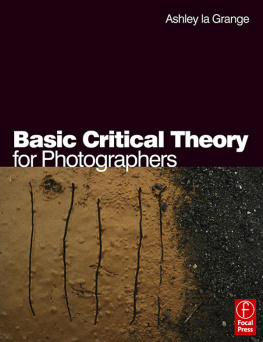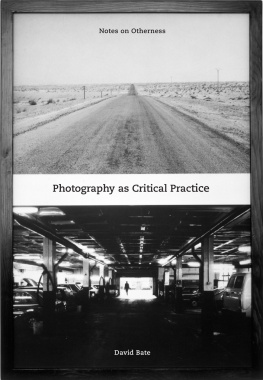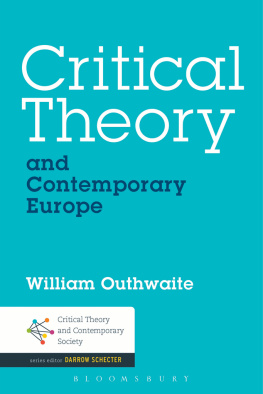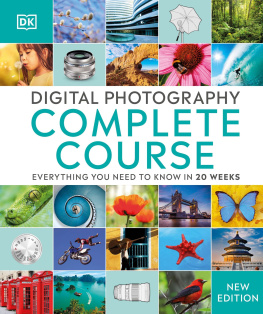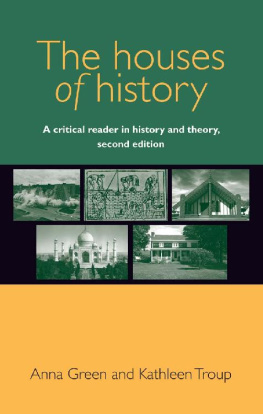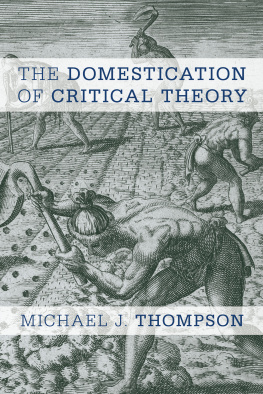Basic Critical Theory for Photographers
Basic Critical Theory for Photographers
Ashley la Grange

Focal Press
An imprint of Elsevier
Linacre House, Jordan Hill, Oxford OX2 8DP
30 Corporate Drive, Burlington, MA 01803
First published 2005
Copyright 2005, Ashley la Grange. All rights reserved
The right of Ashley la Grange to be identified as the author of this work has been asserted in accordance with the Copyright, Designs and Patents Act 1988
No part of this publication may be reproduced in any material form (including photocopying or storing in any medium by electronic means and whether or not transiently or incidentally to some other use of this publication) without the written permission of the copyright holder except in accordance with the provisions of the Copyright, Designs and Patents Act 1988 or under the terms of a licence issued by the Copyright Licensing Agency Ltd, 90 Tottenham Court Road, London, England W1T 4LP. Applications for the copyright holders written permission to reproduce any part of this publication should be addressed to the publisher
Permissions may be sought directly from Elseviers Science & Technology Rights Department in Oxford, UK: phone: (+44) 1865 843830, fax (+44) 1865 853333, e-mail: ), by selecting Customer Support and then Obtaining Permissions
British Library Cataloguing in Publication Data
A catalogue record for this book is available from the British Library
Library of Congress Cataloguing in Publication Data
A catalogue record for this book is available from the Library of Congress
ISBN 0 240 51652 4
For information on all Focal Press publications visit our website at www.focalpress.com

Contents
How to use this book
Many people are put off critical theory because they see it as difficult (often unnecessarily difficult), and cannot see its relevance to their own practical work. The situation is not helped by the fact that much critical theory is written by academics, for other academics who are already familiar with the issues, vocabulary and earlier arguments. The result is that critical theory becomes unnecessarily elitist and many people who would be quite capable of debating the issues are discouraged from doing so. The idea behind this book is to draw these disenfranchised people into some of the debates. Each chapter is followed by a series of assignments, some theoretical, some practical and some a combination of both, which should generate critical thinking by the student. The student and/or institution the student is studying at must decide the range of assignments to be done and the depth at which they should be done. Many of the assignments can be used as discussion points rather than for written work.
The selection of areas to include in the book has been very difficult; there are very important issues and writers that have been ignored. The book does not attempt to cover all the issues and schools of thought, it attempts to encourage students to think critically and hopefully they will then apply this type of thinking to other issues. In part, texts have been chosen that develop arguments or ideas raised in earlier texts so allowing the student to follow the development of ideas by different writers. For example, Sontag, Rosler, Solomon-Godeau and Szirtes all deal with the work of Arbus. The texts have been summarised without editing out issues that some readers may feel are not key to the main argument. This has been done for several reasons: to avoid editorialising the summary; to give the reader a better feel of how the argument developed; and to allow the reader to decide for themselves which issues are the most important or interesting.
The indexing should prove particularly useful as some of the key texts, Sontags On Photography for example, were not indexed in the first place. All references to photographers by the various writers have been left in and indexed as an aid to research. As a further aid to research, key words that would not normally be indexed, such as appearance and reality, are included.
Although the book is illustrated, it would be impossible to reproduce all the photographs required to illustrate all the points of view of the writers. Access to a range of monographs on the work of the photographers is essential to respond adequately to many of the issues raised.
The first chapter is a summary of John Bergers Ways of Seeing. It is first for two reasons: it is easy to understand having been written for a general audience and it leads into photography from art. This should help those students who have never studied photography before but, who will be familiar, to some extent, with art. The book is still in print making reference to it easy (it should be referred to as it is extensively illustrated). Although first published in 1972 the issues it raises, like sexism and the effects of advertising, are still relevant today.
The second chapter is a summary of John Szarkowskis The Photographers Eye and Stephen Shores The Nature of Photographs. Unlike the Ways of Seeing they were written for a photographic audience but are also clearly written and are very well illustrated. They have been chosen for two reasons; because there is a sense in that whatever else a photograph is, it is at a basic level, what they describe it as; and they, to some extent, can be seen as expressing the views of straight photography, an approach to photography that dominated the twentieth century. The Nature of Photographs is still in print so referring to it is easy.
The third chapter is a summary of Susan Sontags On Photography. This collection of essays is undoubtedly one of the most influential pieces of photographic criticism written and is probably required reading in most university courses on photography. It deals with a wide range of issues but many students find it an intimidating read. It is still in print and the summary should be read in conjunction with the full text.
The fourth chapter is a summary of Roland Barthes Camera Lucida. Again this influential book is often found on university courses. Not an easy read, it is an intensely personal search for photographic truth and deals with issues that often arise in photographic criticism. It too is still in print and the original and the summary should be used in conjunction with each other.
The fifth chapter is a summary of the first part of Martha Roslers essay In, Around and Afterthoughts (On Documentary Photography). This essay picks up issues on documentary photography that had been raised by Sontag, and allows the student to follow the development of arguments by different critics. The essay is not infrequently published in collections of essays on photography, so is relatively easy to find.
The sixth chapter summarises Abigail Solomon-Godeaus essay Inside/Out. This essay further develops some of Sontags and Roslers arguments as regards documentary photography. Despite the quality of the essay it seems harder to find than the Rosler essay.
Chapter seven is a summary of the first chapter of Clive Scotts book The Spoken Image which explores the relationship between photography and language. It has been included to introduce students to some of the concepts in semiology and semiotics. These are philosophies of language that both relate to the work of Barthes and are seen as being important in shaping some contemporary approaches to photography.
Next page
